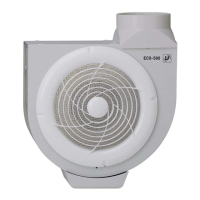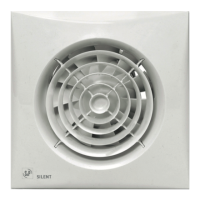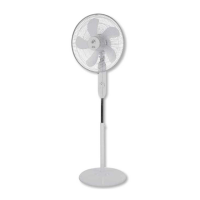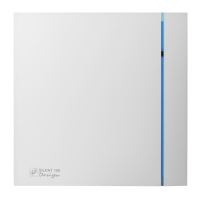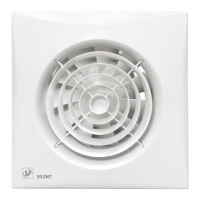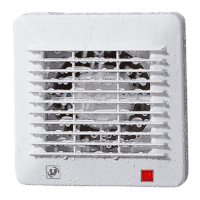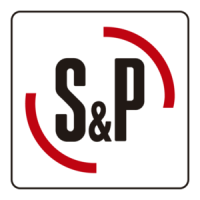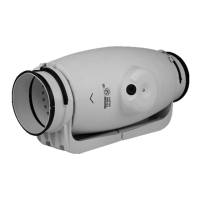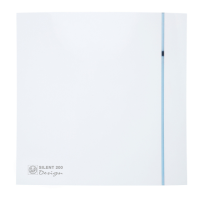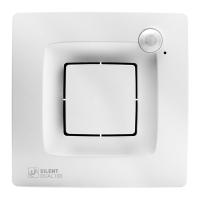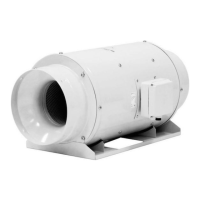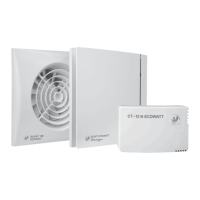Check the structure is complete and has no
damage. Check installation and area is
safe and energise fan unit and start motor.
Check that the impeller and airflow
direction is correct, and there are no
unusual vibrations.
Check current does not exceed fan
equipment nameplate data.
If any of the electrical safety devices blow,
the fan unit must be quickly disconnected
from the mains supply. The whole
installation should be carefully checked
before trying to start up the fan again. After
two hours of operation, check that all
fixings are tight and adjust if necessary.
Maintenance.
Maintenance/repairs must be carried
out by competent and local regulations.
Fan unit equipment should be
electrically isolated and locked out
before any work started.
Fan unit equipment should be regularly
cleaned, frequency depending upon
service load and application, but no less
than every year. Cleaning should include
all areas where dust can accumulate in the
fan equipment.
Special attention should be made to any
unusual sounds, vibration or temperature.
If any problems are detected the fan unit
equipment should be stopped immediately
and cause inspected. The impeller and
blades should be regularly checked for
damage that could cause imbalance in the
moving parts
Recycling.
In accordance with EEC Standards and our
responsibility for future generations, we are
obliged to recycle all the materials we can.
Therefore, please deposit all waste
material and packaging in their
corresponding recycling containers and
hand in the replaced units to the nearest
handler of this type of waste product.
The fan unit is mainly made of steel,
copper, ferrite, aluminium and plastic.
These components should be recycling in
the following categories:
- Steel and iron
- Aluminium
- Non-ferrous metals
- Plastics
- Insulating materials
- Cables
- Electronic scrap
To clarify any questions regarding S&P
products contact your local distributor. For
its location and to obtain the EU
Declaration of Conformity certified
technical data sheet and copy of this
instruction manual, see our web site
www.solerpalau.com.
Information requirements for RVU
a | Trade mark
b | Identifier
c | SEC average climate (kWh/(m2.an))
c1 SEC class
c2 SEC cold climate (kWh/(m2.an))
c3 SEC warm climate (kWh/(m2.an))
d | Typology
e | Type of drive
f | Type of HRC
g | Thermal efficiency (%)
h |
i | Electrical power input at maximum flow rate (W)
j |
k | Reference flow rate (m3/s)
l | Reference pressure difference (Pa)
m |
n | Control factor
n1 Control typology
o | Maximum internal leakage for BVU (%)
o1 Maximum external leakage for BVU and UVU (%)
p | Mixing rate for BVU without duct connection (%)
q | Position of visual filter warning
q1 description of visual filter warning
r | Instructions to install supply grilles
r1 Instructions to install exhaust grilles
s | Internet address
t | Airflow sensitivity to pressure variation
u | Indoor/outdoor air tighness (m3/h)
v | Annual electricity consumption - Average climat (kWh/a)
v1 | Annual electricity consumption - Warm climat (kWh/a)
v2 | Annual electricity consumption - Cold climat (kWh/a)
w | Annual heating saved - Average climat (kWh/a)
w1 | Annual heating saved - Warm climat (kWh/a)
w2 | Annual heating saved - Cold climat (kWh/a)
